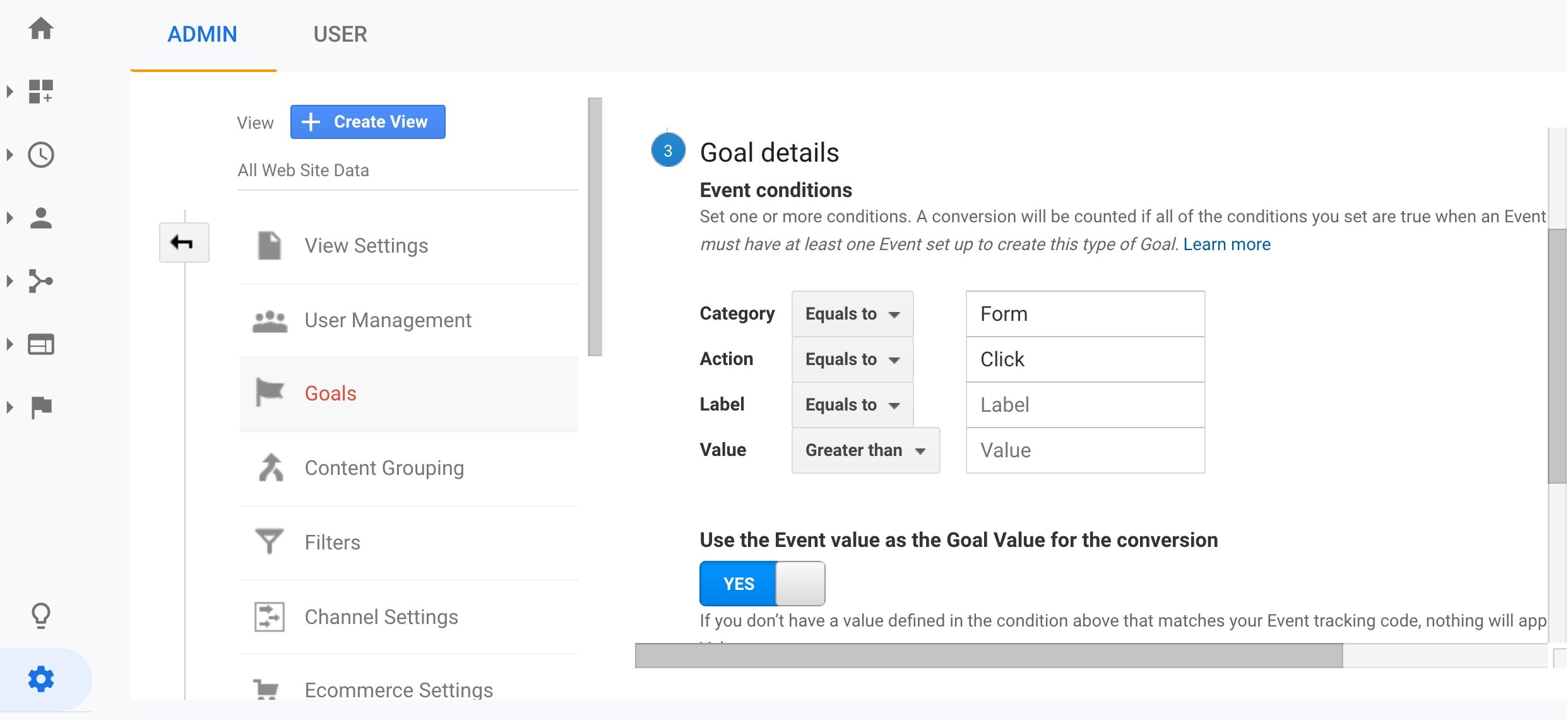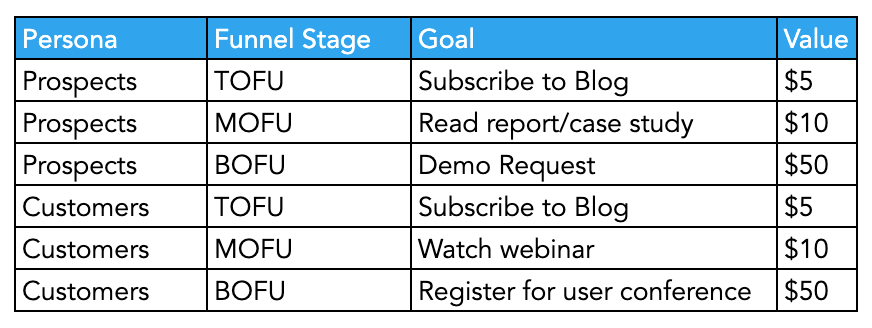Discover the Limitations of Google Analytics Goals: Introducing the Information Kind That Remain Untrackable
As services significantly depend on data-driven decision-making, recognizing the limitations of devices like Google Analytics comes to be extremely important. While Google Analytics Goals deal valuable understandings right into user communications, there exist information kinds that thwart monitoring, posing difficulties to a thorough understanding of customer actions.
Incomplete User Journey Tracking
Insufficient individual journey tracking within Google Analytics can impede the capability to accurately evaluate user behavior. When the customer journey is not totally tracked, there are gaps in the information that avoid an extensive understanding of exactly how individuals communicate with a site. This lack of insight can bring about missed chances for optimization and enhancements to the individual experience.
One typical concern with incomplete customer trip monitoring is the failure to see the full course that customers take before completing a goal or leaving the website. Without this info, it is testing to identify where individuals may be experiencing challenges or rubbing points that prevent them from converting. Additionally, incomplete tracking can cover the influence of particular advertising and marketing efforts or site changes on customer habits.
To resolve this restriction, it is crucial to establish proper tracking devices within Google Analytics to catch the whole customer trip. This may involve setting up occasion monitoring, objective funnels, or using devices like Google Tag Supervisor to make sure that no essential communications go unrecorded. By gaining a detailed sight of the customer trip, website owners can make even more informed choices to boost individual engagement and drive conversions.
Attribution Obstacles
Navigating via attribution difficulties in Google Analytics requires a detailed understanding of exactly how various touchpoints add to the general conversion process. Attribution challenges develop from the complexity of contemporary customer trips, where customers connect with numerous channels prior to converting. Google Analytics offers different attribution designs like first touch, last touch, and linear, each supplying a various perspective on exactly how debt is appointed to touchpoints along the conversion path. These versions might not constantly accurately show the true effect of each touchpoint on the conversion.
One usual acknowledgment challenge is the difficulty in associating conversions to the right source, particularly in instances where users connect with several channels prior to transforming. This can bring about inaccuracies in figuring out which advertising initiatives are driving the most conversions. Furthermore, cross-device tracking poses one more acknowledgment difficulty, as customers frequently switch over in between tools throughout their trip, making it testing to track their interactions flawlessly. Marketing experts have to very carefully analyze and analyze attribution data to make informed choices and maximize their advertising techniques efficiently.
Offline Conversions
Offered the difficulties associated with connecting conversions properly in online channels, the measurement of offline conversions provides a substantial possibility for online marketers looking for a more detailed understanding of their customers' journey. Offline conversions describe activities that customers take in the real world, such as making acquisitions in brick-and-mortar shops or over the phone, participating in occasions, or engaging with printed products - what data is google analytics goals unable to track. These conversions are important for businesses that operate both online and offline, as they supply beneficial insights into the effectiveness of advertising projects throughout numerous touchpoints
Tracking offline conversions typically presented a significant difficulty for online marketers, look here as it was testing to More Info connect these actions back to details online communications properly. Nonetheless, with improvements in technology, such as the combination of CRM systems, special identifiers, and promo code codes, organizations can currently link the void between online and offline data to get a more all natural sight of consumer behavior. By successfully gauging offline conversions, marketing professionals can enhance their strategies, allot sources a lot more successfully, and inevitably improve the general client experience.
Cross-Device Tracking
Cross-device monitoring plays a crucial duty in recognizing the interconnected nature of customers' electronic communications throughout numerous devices. In today's omnichannel globe, where customers perfectly switch in between desktop computers, tablets, and mobile phones, tracking their habits across these gadgets is vital for marketing experts to gain a comprehensive view of their client trip.

Additionally, privacy issues and laws such as GDPR and CCPA have even more difficult cross-device tracking. With individuals demanding even more control over their data and raised restrictions on tracking modern technologies, marketing professionals should find privacy-compliant and innovative ways to connect customer communications throughout tools.
Dynamic Content Involvement
Comprehending user interaction with vibrant content is pivotal in enhancing electronic advertising techniques for improved audience communication. Dynamic material refers to site elements that transform based upon individual behavior, choices, or other factors, offering a personalized experience. Nevertheless, tracking user communications with vibrant content postures difficulties for conventional analytics tools like Google Analytics.
While Google Analytics can track standard communications like clicks and page views, it may struggle to record more nuanced engagements within vibrant content. what data is google analytics goals unable to track. Metrics such as time invested in particular vibrant components, hover activities, or interactions within pop-ups are typically not easily measurable making use of common tracking methods. This limitation prevents marketing professionals' capacity to completely his comment is here understand how users are involving with vibrant content and customize their methods appropriately

Final Thought
To conclude, Google Analytics goals have restrictions in tracking insufficient user trips, associating conversions precisely, catching offline conversions, tracking cross-device interactions, and gauging vibrant material involvement. These restrictions highlight the significance of discovering added monitoring approaches and tools to acquire an extra thorough understanding of customer actions and conversions beyond what Google Analytics can offer.
While Google Analytics Goals offer important insights right into user communications, there exist data types that thwart tracking, posing challenges to an extensive understanding of individual behavior.Incomplete customer trip tracking within Google Analytics can hinder the ability to precisely evaluate user behavior. When the user journey is not totally tracked, there are gaps in the data that prevent a thorough understanding of just how individuals communicate with a web site.One common issue with insufficient customer trip tracking is the lack of ability to see the complete course that users take before finishing a goal or leaving the site. By obtaining a thorough sight of the individual trip, web site owners can make more informed decisions to enhance customer engagement and drive conversions.
 Devin Ratray Then & Now!
Devin Ratray Then & Now! Mackenzie Rosman Then & Now!
Mackenzie Rosman Then & Now! Melissa Joan Hart Then & Now!
Melissa Joan Hart Then & Now! Michelle Trachtenberg Then & Now!
Michelle Trachtenberg Then & Now! Peter Billingsley Then & Now!
Peter Billingsley Then & Now!